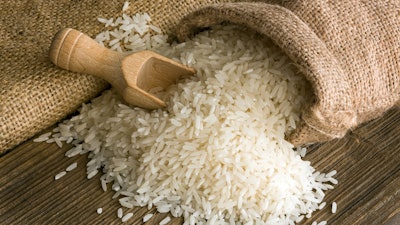
Rice is a staple food for millions of people around the world. Advances in genetics and breeding science have modernized rice cultivation, leading to improvements in grain weight, an important determinant of both grain yield and appearance quality in rice. Studies focusing on quantitative trait loci (QTL) — small regions of DNA that control factors like grain size, length, and shape — have been at the forefront of these advances.
By identifying favorable QTL (i.e., traits) and incorporating them into different rice varieties, scientists have been able to increase grain yield, contributing to greater food security. However, the potential of favorable QTL from wild rice varieties, which are not usually consumed, has been largely untapped.
A species of wild rice called Oryza glumaepatula has received some attention because it is an important source of genetic diversity for rice cultivar improvement. Therefore, a group of researchers from the South China Agricultural University and Guangdong Laboratory for Lingnan Modern Agriculture developed a series of germplasm resources by breeding O. glumaepatula with HJX74, an elite regular rice variety. Their findings, made available online on 19 July 2022 and published in The Crop Journal, demonstrate that gl9, a particular variant of the GS9 gene from O. glumaepatula, contributes to a high grain yield and good quality in cultivated rice.
Prof. Shaokui Wang, the lead investigator on the study, explains, “Several wild rice varieties have good genetic resources that would be beneficial in the rice varieties we consume. But these can often not be incorporated because wild rice species are quite different from the cultivated ones. One aim of our study was essentially to bridge this gap and reap the benefits of favorable traits from wild rice.”
The study was largely divided into two phases. In the first part, several single-segment substitution lines (SSSLs) were generated using O. glumaepatula as the donor parent and HJX74 as the recipient parent. These SSSLs, in which foreign genes from O. glumaepatula were integrated into the genome of HJX74, were genetically analyzed, and 12 QTL that determine grain length (GL), 9 that determine grain width (GW), and 9 that determine kernel weight (TKW) were identified. Interestingly, some of these QTL were mapped to a novel “allele,” i.e., a new genetic variant, called gl9. This allele was a variant of the GS9 gene, a known regulator of grain shape and appearance quality in rice. Additional comparisons showed that the SSSL containing the gl9 allele had longer and more slender grains than the parent HJX74, and their TKW and grain yield per plant were also higher. This indicated that the gl9 allele was beneficial for improving rice quality.
Next, to confirm the effect of this allele, genetically modified rice varieties were created by introducing gl9 into HJX74 using genetic tools. Experimental results showed that the presence of gl9 increased the length and slenderness of rice grains and decreased their chalkiness, as compared with regular HJX74. Additional rice breeding by design demonstrated that the combination of gl9 with previously-in-use genes could further enhance the appearance quality and yield of rice grains.
Together, these findings imply the usefulness of gl9 as a target allele for improving rice production.Wang says, “In this era, it has become important for both farmers and governments to improve food production. Unfortunately, it is challenging to increase rice yield without compromising on its quality. Our findings regarding these new alleles such as gl9 that can improve both these factors are therefore of great importance.”
The findings by Wang and her team on the gl9 allele could lead to significant progress in rice breeding programs. They offer a much-needed step toward greater food security in the future.






















